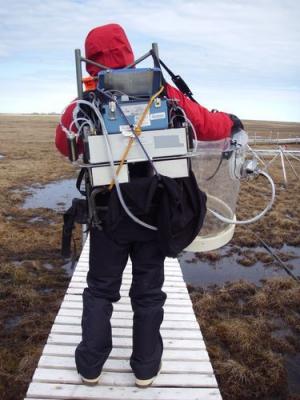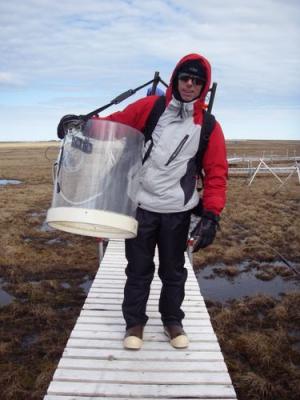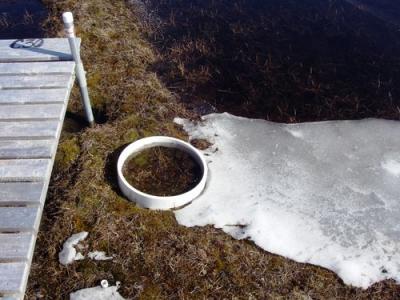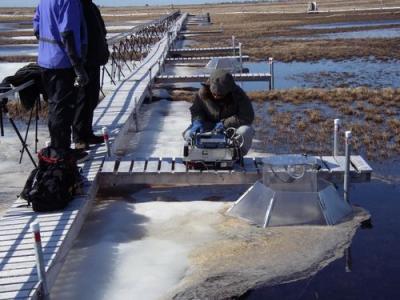Jack’s weather report:
We woke up to partly cloudy skies and milder morning temperatures.
Current conditions:
Temp: 38 °F (3.3 °C)
Winds out of the east at 13 kt (15 mph)
There was a bit of excitement in the air yesterday morning. The snow and ice had finally melted enough for us to go out to the field and take some measurements This was intended to be practice run for what we would be doing at the biocomplexity site on a regular basis.

This is me carrying the LI-COR 6200 and the plot chamber.

This is the plot chamber that sits on a base that was put on each plot last year.

Here is the chamber base.
Are things a little clearer now?
We will be taking 12 measurements on a 4-hour rotating basis. The biocomplexity site is
a thaw lake basin divided into three sections, a control, a drier than normal basin, and a wetter than normal basin. Each basin has a boardwalk that crosses the entire width, and each boardwalk has 12 docks jutting out about 8 feet. This is where the measurements will be made.

The boardwalk and docks are clearly visible as Amorita is checking the chamber values.
You might ask, "What are we measuring?”
We are measuring what is known as NEE, or Net EcosystemAn ecological community together with its environment, functioning as a unit. Exchange. It is the sum of EcosystemAn ecological community together with its environment, functioning as a unit. Respiration (ER) and Gross Primary Productivity (GPP), expressed as
NEE = ER + GPP
In simpler terms NEE is the difference between the rate at which organisms take in carbon from the ecosystem, which happens when plants photosynthesize, and the rate at which organisms give off carbon through respiration, which happens when organisms consume the plants for energy. ER is always a negative value, and GPP is always positive, and NEE can be positive or negative indicating whether carbon is leaving the ecosystem or entering it as carbon dioxide.
I hope I haven’t confused you too much.
We were out from 10:00 a.m. until 5:00 p.m. taking these measurements. Sometimes you have to run several samples to get reliable data. This slows you down but, HEY!, this is science and we want to get it right.


Comments